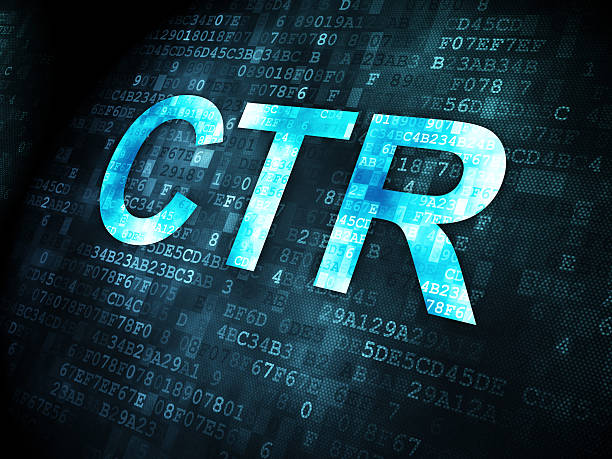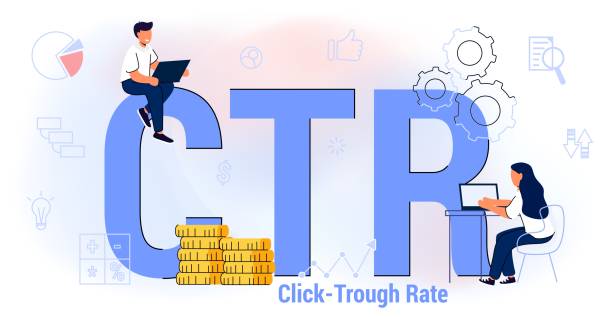

Click-Through Rate (CTR) is a key metric used in digital marketing to measure the effectiveness of online advertising campaigns. It refers to the percentage of people who click on a specific link or advertisement after seeing it. In other words, CTR measures how successful an ad is at generating clicks and driving traffic to a website.
A high CTR indicates that the ad is resonating with its target audience and compelling them to take action. This can lead to increased website traffic, conversions, and ultimately, revenue. On the other hand, a low CTR may indicate that the ad needs to be optimized or adjusted in order to better engage users.
CTR is calculated by dividing the number of clicks on an ad by the number of times it was shown (impressions), then multiplying by 100 to get a percentage. For example, if an ad receives 100 clicks and 1,000 impressions, the CTR would be 10%.
Monitoring and analyzing CTR metrics are essential for marketers to understand which ads are performing well and which ones need improvement. By continuously monitoring CTR, marketers can make data-driven decisions to optimize their advertising campaigns and maximize their return on investment.
In conclusion, Click-Through Rate is a crucial metric for measuring the success of online advertising efforts. By tracking CTR metrics and making strategic adjustments based on this data, marketers can improve campaign performance and drive better results for their business.
Click-through rate (CTR) is a crucial metric in digital marketing that measures the effectiveness of an online advertising campaign. It is defined as the percentage of people who click on an ad after seeing it, compared to the total number of impressions.
The importance of CTR cannot be overstated in digital marketing. A high CTR indicates that your ad is resonating with your target audience and driving traffic to your website. This can lead to increased brand awareness, higher conversion rates, and ultimately, more sales.
On the other hand, a low CTR may indicate that your ad is not relevant or engaging enough for your audience. By monitoring and analyzing your CTR metrics, you can identify areas for improvement in your ad copy, targeting, or design to optimize performance.
In addition, CTR plays a significant role in determining the cost of running ads on platforms like Google Ads or Facebook Ads. Higher CTRs typically result in lower costs per click (CPC), as these platforms reward ads that are more engaging and relevant to users.
Overall, tracking and optimizing your CTR is essential for maximizing the success of your digital marketing campaigns. By focusing on creating compelling ads that drive clicks, you can increase traffic to your website, generate leads, and ultimately grow your business.

Have you ever wondered how some businesses seem to magically appear at the top of local search results on Google Maps?. The secret lies in understanding and harnessing the power of Click-Through Rate (CTR) analytics.
CTR analytics measure the percentage of users who click on your business listing after seeing it in search results.
Posted by on 2024-04-18

CTR Analytics for Maps is a powerful tool that allows businesses to track and analyze the click-through rate (CTR) of their listings on online maps, such as Google Maps or Apple Maps.. CTR is a metric that measures how often users click on a specific listing after seeing it in search results.
Posted by on 2024-04-18
Click-through rate (CTR) is a crucial metric in the world of digital marketing. It measures the percentage of people who click on a specific link, ad, or call-to-action out of the total number of individuals who view it. There are several factors that can greatly influence CTR and understanding these factors is essential for optimizing your marketing efforts.
One key factor that affects CTR is the relevance of your content to your target audience. If your message resonates with your audience and meets their needs or interests, they are more likely to click on it. On the other hand, if your content is not relevant or does not provide value to them, they are less likely to engage with it.
Another important factor that can impact CTR is the placement and visibility of your call-to-action. If your CTA is buried at the bottom of a page or hidden within a block of text, users may not even see it. Placing your CTA prominently and making it stand out visually can significantly increase the chances of users clicking on it.
Additionally, the design and appeal of your ad or link also play a role in determining CTR. Eye-catching visuals, compelling copy, and clear messaging can all contribute to higher engagement rates. Aesthetically pleasing ads are more likely to grab attention and entice users to click through.
Lastly, external factors such as seasonality, current events, competition, and market trends can all impact CTR as well. Keeping an eye on these external influences and adjusting your strategies accordingly can help you stay ahead of the game.
In conclusion, there are multiple factors that affect CTR metrics in digital marketing. By focusing on relevance, visibility, design, and external influences, you can optimize your campaigns for maximum engagement and success. Remember that testing different approaches and continuously analyzing data will help you fine-tune your strategies over time for better results.
Click-through rate (CTR) is a crucial metric in the world of digital marketing. It measures the percentage of people who click on a specific link or advertisement after seeing it. Calculating CTR is essential for evaluating the effectiveness of your marketing campaigns and understanding how well they are resonating with your target audience.
To calculate CTR, you simply divide the number of clicks on a link by the number of impressions it received, and then multiply that result by 100 to get a percentage. For example, if an advertisement receives 100 clicks and 1,000 impressions, the CTR would be 10% (100/1,000 x 100).
By monitoring CTR metrics regularly, you can track the performance of your ads and make informed decisions about where to allocate your resources. A high CTR indicates that your ads are engaging users and driving traffic to your website, while a low CTR may signal that adjustments need to be made to improve their effectiveness.
In conclusion, calculating CTR is a valuable practice that can provide valuable insights into the success of your marketing efforts. By understanding this metric and using it to optimize your campaigns, you can increase engagement, drive more traffic, and ultimately achieve better results for your business.
Improving click-through rate (CTR) is crucial for any digital marketing strategy, as it directly impacts the success of your campaigns. There are several best practices that can help you boost your CTR metrics and drive more traffic to your website.
One important factor to consider is the relevance of your ad copy or content to your target audience. Make sure that your messaging is clear, engaging, and tailored to appeal to the needs and interests of your potential customers. This will increase the likelihood of users clicking on your ads or links.
Another key aspect to focus on is optimizing your headlines and call-to-action (CTA) buttons. Your headline should be attention-grabbing and compelling, while your CTA should be persuasive and encourage users to take action. A strong CTA can significantly improve CTR by prompting users to click through to your website.
Additionally, monitoring and analyzing data from your campaigns is essential for identifying what is working well and what can be improved. By tracking metrics such as impressions, clicks, and conversions, you can gain valuable insights into how users are interacting with your content and make informed decisions on how to optimize for better results.
Overall, by implementing these best practices for improving CTR metrics, you can effectively increase engagement with your target audience and drive more traffic to your website. Remember that consistency in testing different strategies and continuously refining your approach is key to achieving long-term success in boosting CTR metrics.
When analyzing click-through rate (CTR) for any topic, there are common mistakes that should be avoided in order to get accurate and reliable results.
One of the most common mistakes is not considering the context of the CTR. It's important to remember that CTR can vary depending on various factors such as industry, target audience, and even time of day. Failing to take these factors into account can lead to misleading conclusions about the effectiveness of your campaign.
Another mistake is focusing solely on high CTR without considering other metrics such as conversion rate or bounce rate. While a high CTR is generally a good indicator of engagement, it doesn't necessarily translate to success if users aren't taking further action on your website. It's important to look at the bigger picture and analyze all relevant metrics in conjunction with CTR.
Additionally, using CTR as the sole measure of success can be problematic. It's important to remember that CTR is just one piece of the puzzle when evaluating the performance of your campaigns. A holistic approach that considers multiple metrics will give you a more comprehensive understanding of how well your efforts are performing.
In conclusion, when analyzing CTR for any topic, it's crucial to avoid common mistakes such as ignoring context, focusing solely on high CTR, and using CTR as the only measure of success. By approaching analysis with a balanced perspective and considering all relevant metrics, you'll be better equipped to make informed decisions and optimize your campaigns for maximum impact.